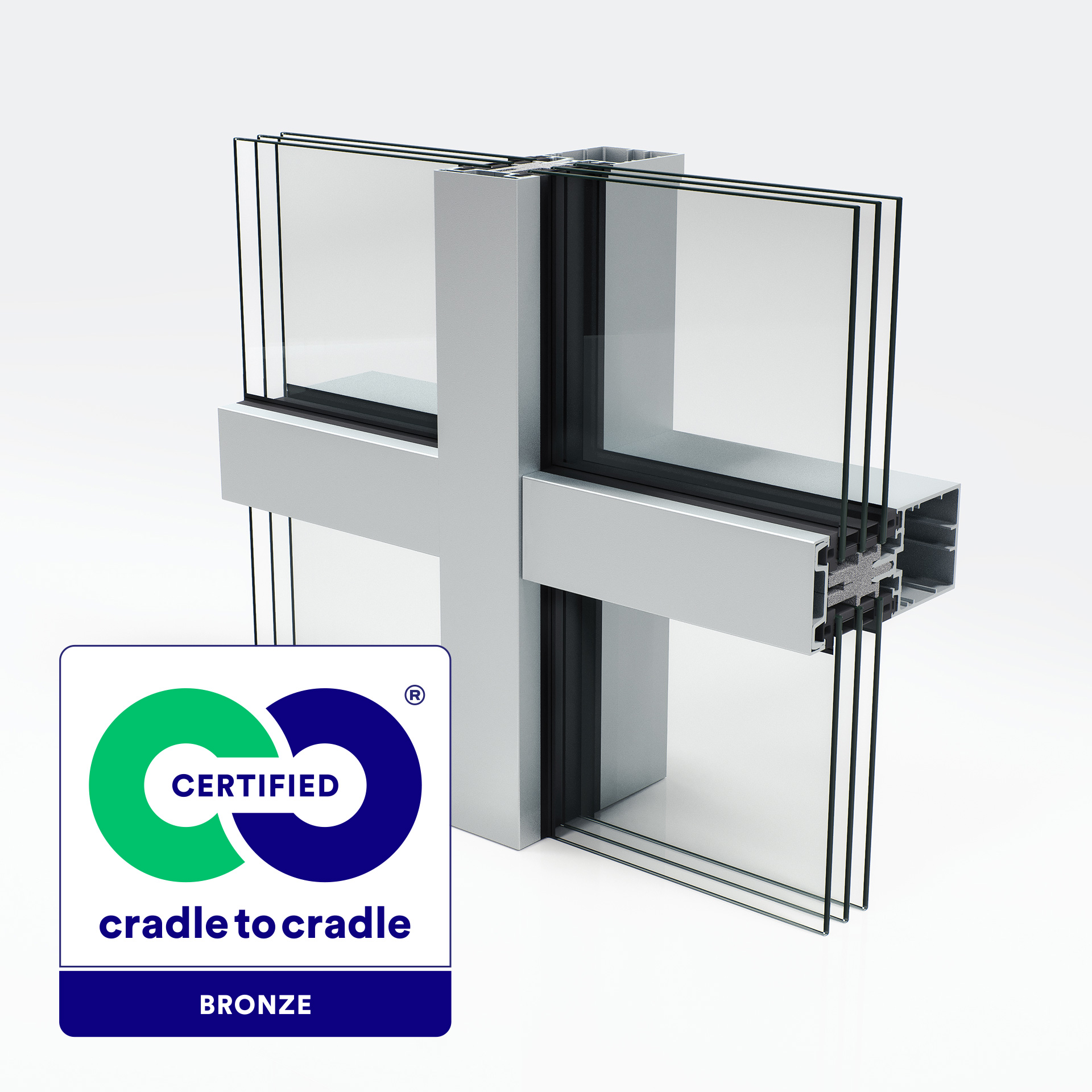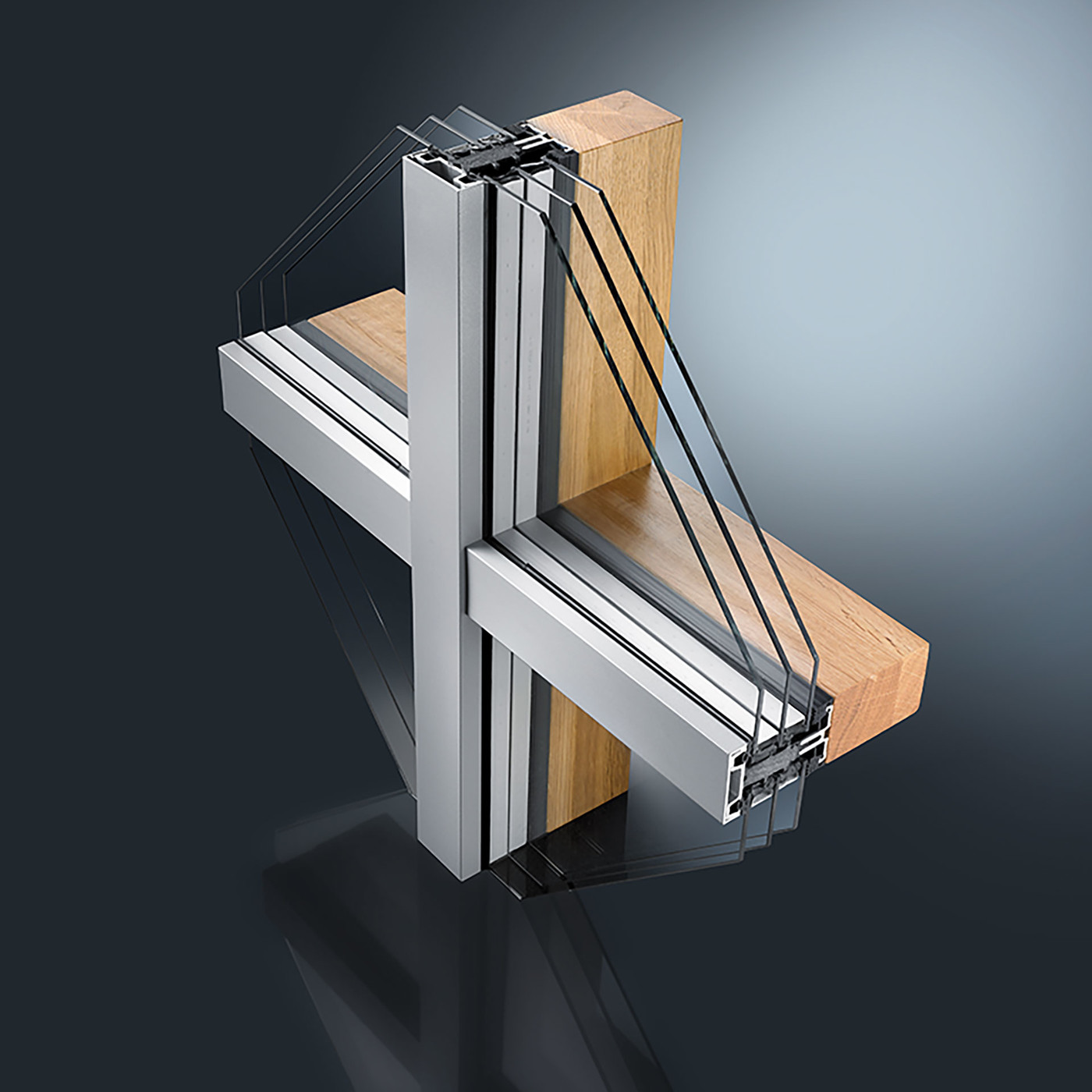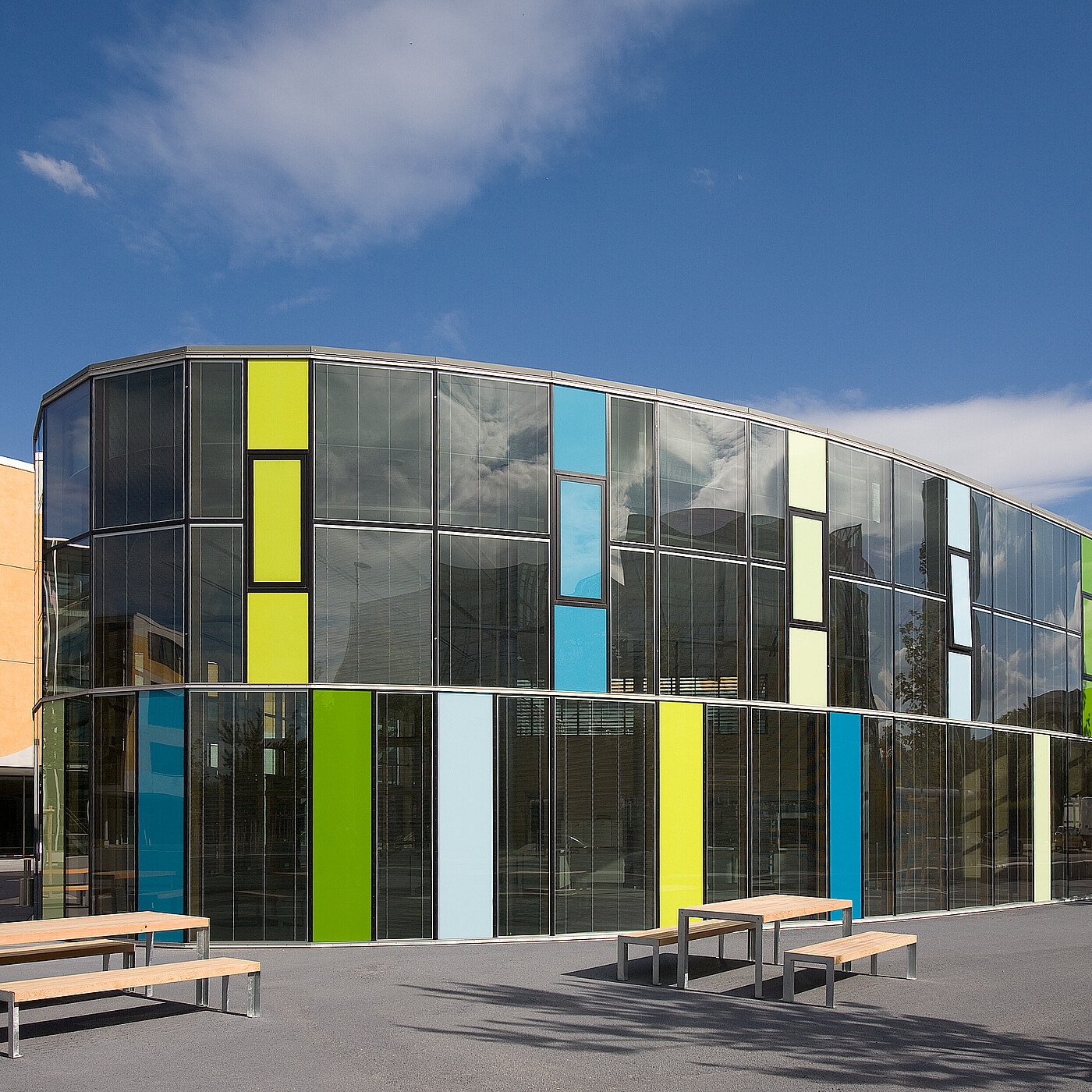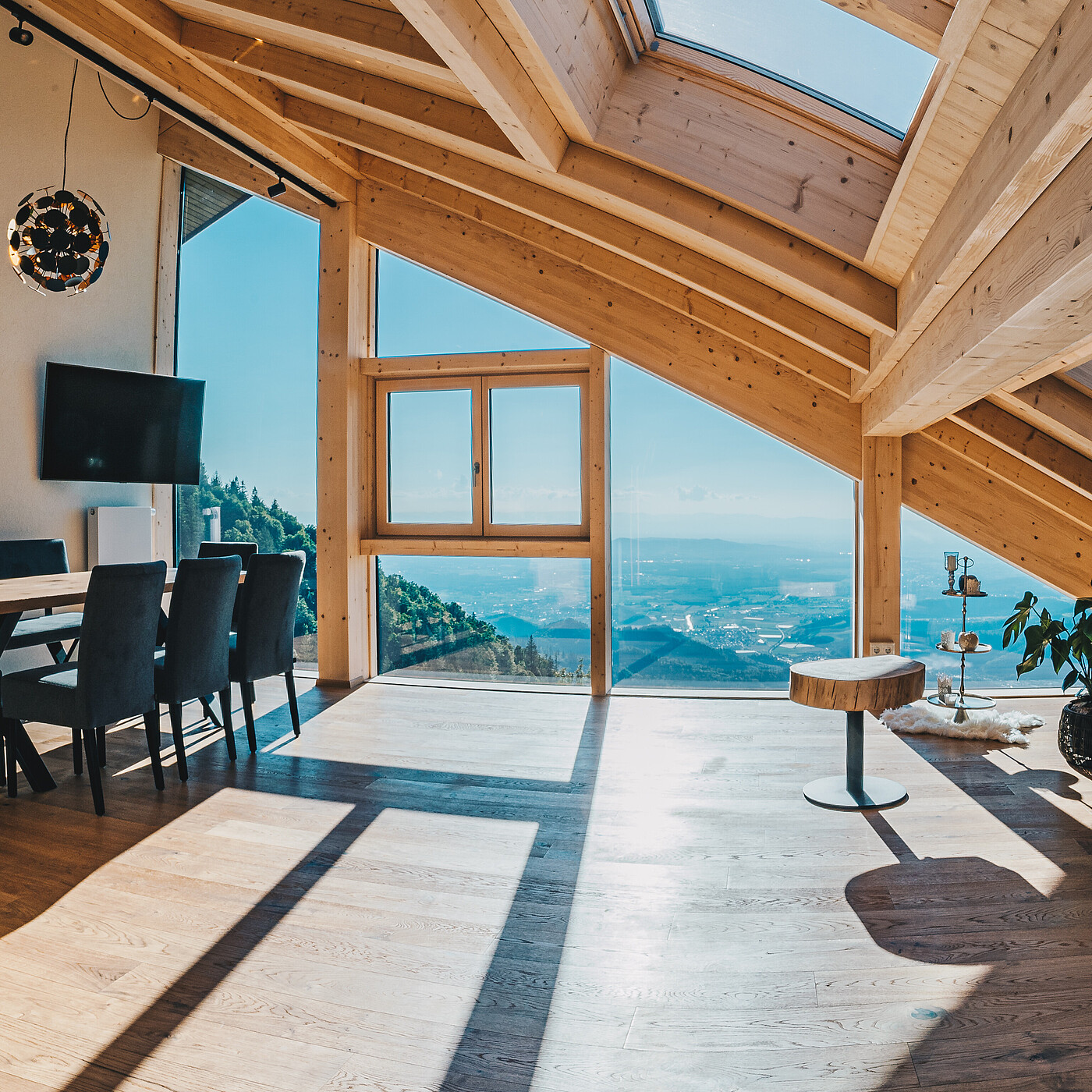The façade as a universal talent.
"Modern facade systems today and especially in the future have to meet an extremely broad range of requirements," says Prof. Dr. Thomas Fattler, Head of Technology and Product Management at Gutmann Bausysteme. The constantly growing requirements range from architectural and technical innovation to ensuring optimum quality of life in the building in terms of indoor climate, daylight, weather protection, sound insulation, and safety, to the wide spectrum of sustainability issues in terms of materials and energy, as well as the equally wide range of issues of cost-effectiveness and customer orientation. Great challenges for Gutmann Bausysteme - but also exciting opportunities for a future with sustainable success.
Here, a distinction must be made between two fundamental phases: In the construction phase of a building, such a system must of course meet the static as well as the design requirements of architects and civil engineers and offer them the greatest possible variety of possibilities and options. For some time now, the trend here has been toward ever slimmer profiles and ever more glass area. The limits of technical possibilities in terms of statics and material technology are being explored ever more consistently here and mean ever greater challenges for us in terms of product development and product innovation, especially as more and more customizability and flexibility of the systems is required.
The second important phase is the use of the building over many years, and here one of the most important requirements is the creation of optimal quality of living in the interior spaces. Daylight and indoor climate are the central keywords here: How can a façade system contribute to a pleasant lighting situation during various times of the day in the building, how can the system protect against excessive solar radiation and heat development, especially in times of increasingly noticeable climate change? In addition, there is the equally decisive function of weather protection: the facade must, for example, withstand high wind forces as well as guarantee reliable impermeability in the event of driving rain. And last but not least, important safety aspects such as burglary protection also play a major role in the quality of life. But that doesn't even begin to cover the third important area of requirements, namely all the sustainability aspects that now play an equally important role in the design of a modern facade system, and which encompass the entire life cycle of the product, from manufacture to recycling. And the fourth important aspect: the facade system must of course also be economically competitive in order to survive in the market and be interesting for our customers, it must be easy to use and install, and all service aspects in terms of customer support and advice must be right.
We are therefore dealing with an extremely broad range of requirements that can be divided into four main areas: firstly, architectural and technical innovation; secondly, ensuring optimum quality of life in the building in terms of indoor climate, daylight, weather protection, sound insulation and safety; thirdly, the wide range of sustainability issues relating to materials and energy; and fourthly, the major issue of cost-effectiveness and customer orientation, explains Prof. Dr. Thomas Fattler, Head of Technology and Product Management.
The topic of customer orientation also leads me, of course, to another topic already mentioned earlier, namely the growing demand for the individualization market and flexibility of our systems. For example, we recently had to fulfill a very interesting order in which a large variety of different sound insulation requirements had to be met within a construction project. Particularly when building in urban areas, the sound insulation requirements for each project generally decrease depending on the floor height: the higher the building level, the lower the sound level due to street noise. In this project, however, the sound insulation requirements differed not only vertically but also horizontally: One part of the building housed the executive board office, for example, where a particularly quiet 38 decibels was required, while in other areas that were less sound-sensitive in terms of use, 45 decibels was sufficient. Today, a uniform system must therefore be equipped to meet a wide variety of requirements, even for such "invisible" requirements as sound insulation.
And since we are talking about the topic of sound insulation: The ever-growing urbanization makes sound insulation in facade construction a very important topic for the future. Forecasts say that by 2050, around 70 percent of the world's population will live in cities. Where many people live together in a highly condensed space, our world is becoming increasingly noisy, and at the same time our requirements for well-being and quality of life indoors are rising more and more. Structural noise control is therefore a very complex topic, in which all the sound effects acting on the building must be taken into account: This includes airborne sound, impact sound and sound generated by the building. In addition, there are noise effects from outside, such as road noise, air traffic, or sound generated by industrial and commercial facilities. That is why, for example, with our Cradle to Cradle certified facade system GCW 050/060, we not only meet particularly high requirements in terms of sustainability, but also especially in terms of sound insulation with a consistently uniform system structure and optimum functionality with extreme durability.
By the way, our GCW 050/060 system is also a very good example of another important trend in object-specific flexibility in facade construction: architects as well as real estate developers today attach great importance to the individualization of the building design, often up to the implementation of complete corporate identities, e.g. in the case of an office building. In the same way, holistic design concepts are now also an important factor for residential buildings, both in terms of aesthetic quality of life and marketing. It can be said, that the larger a project is, the higher the requirements for object-specific individualization are today in most cases. This also applies to colour surface design, for example, which is why a system such as our GCW 050/060 is available in an almost unlimited variety of colours. Here, we can also meet our customers' requirements in a special way, since we have recently had our own new horizontal and vertical coating plant at our headquarters in Weissenburg, which considerably extends our vertical range of manufacture, also in design matters. The rapidly growing range of colour and surface variants that we now offer alone shows where the trend is heading. Initially, we thought we could manage with a range of around 200 colours, but today we already offer well over a thousand colour and surface options.

If we talk about the first topic of architectural and technical innovation - which challenges play the most important role here at Gutmann Bausysteme currently and in the future?

At the beginning of this article, I mentioned the trend towards ever larger glass packages and, at the same time, ever slimmer profiles in facade construction: Here, our profiles are faced with the constantly growing challenge of absorbing the ever-increasing glass weights, which we have to transfer accordingly via the mullions and transoms. In the case of both aluminium facades and wood/aluminium facades, we therefore have to push our systems to ever greater technical limits and develop them further in order to meet these growing requirements. The grid dimensions are becoming larger and larger, which means proportionally less and less material that has to perform more and more. Wood-aluminium systems reach their limits here sooner than aluminium systems, because with aluminium hollow chamber profiles there are sufficient additional options for reinforcing the profile, for example with steel. Where this trend is leading is already shown by some systems on the market, which already have an extremely slim face width of 40 or even 35 millimeters. However, we have so far deliberately remained reticent about these extreme profile dimensions, as these systems are only impressive at first glance, but are statically quite limited in terms of their achievable height and width. Instead of spectacular trends that are not yet convincingly mature, we therefore prefer to focus on innovations that benefit the actual quality of the design and its structural integrity, for example with a new glass support that we have developed specifically for the high loads of large glass packages.


